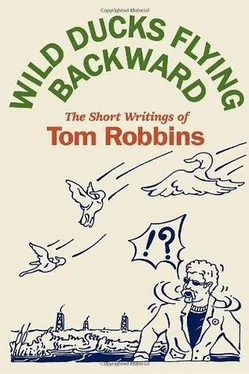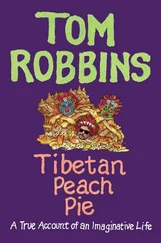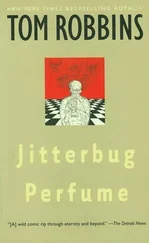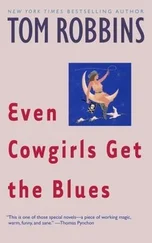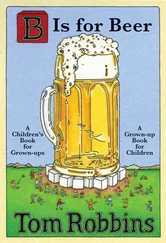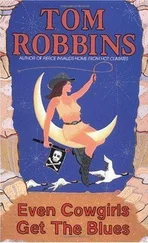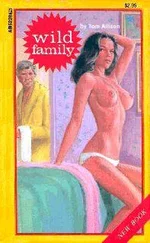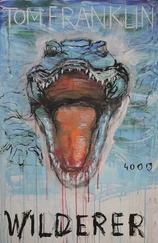What wiser way, then, to face the Big Tomorrow than with an open mind, an adventurous spirit, and a romantic heart; ready, even eager, for come-what-may? Fairy Godmother knew this. That’s why she conjured up the wearable goblet. And why it got results.
So, pass those high heels, baby, and don’t spare the stiletto. Here’s looking at you — from the ground up. And Happy 21st Century!
Bergdorf Goodman, 1999
Red hair is a woman’s game.
The harsh truth is, most red-haired men look like blondes who’ve spoiled from lack of refrigeration. They look like brown-haired men who’ve been composted out behind the barn. Yet that same pigmentation that on a man can resemble leaf mold or junkyard rust, a woman wears like a tiara of rubies.
Not only are female redheads frequently lovely but theirs is a loveliness that suggests both lust and danger, pleasure and violence, and is, therefore, to the male of the species virtually irresistible. Red — Code Red — were the tresses of the original femme fatale.
Of course, much of the “fatale” associated with redheads is illusory, a stereotypical projection on the part of sexually neurotic men. Plenty of redheads are as demure as rosebuds and as sweet as strawberry pie. However, the mere fact that they are perceived to be stormy, if not malicious, grants them a certain license and a certain power. It’s as if bitchiness is their birthright. By virtue of their coloration, they possess a congenital permit to be terrible and lascivious, which, even if never exercised, sets them apart from the remainder of womankind, who have traditionally been expected to be mild and pure.
Now that women are demolishing those old misogynistic expectations, will redheads lose their special magic, will Pippi Longstocking come to be regarded as just one of the girls: Heidi with a fever, Snow White at the beach? Hardly. To believe that blondes and brunettes are simply redheads in repressive drag is to believe that UFOs are kiddie balloons. All redheads, you see, are mutants.
Whether they spring from genes disarranged by earthly forces or are “planted” here by overlords from outer space is a matter for scholarly debate. It’s enough for us to recognize that redheads are abnormal beings, bioelectrically connected to realms of strange power, rage, risk, and ecstasy.
What is your mission among us, you daughters of ancient Henna, you agents of the harvest moon? Are those star maps that your freckles replicate? How do you explain the fact that you live longer than the average human? Where did you get such sensitive skin? And why are your curls the same shade as heartache?
Alas, inquiry is futile: either they don’t know or they won’t say — and who has the nerve to pressure a redhead? We may never learn their origin or meaning, but it probably doesn’t matter. We will go on leaping out of our frying pans into their fire, grateful for the opportunity to be titillated by their vengeful fury, real or imagined, and to occasionally test our erotic mettle in the legendary inferno of their passion.
Redheaded women! Those blood oranges! Those cherry bombs! Those celestial shrews and queens of copper! May they never cease to stain our white-bread lives with supernatural catsup.
GQ, 1988
In the smart and lively movies of Alan Rudolph, nuances are at work like bees in a hive. A busy swarm of subtleties generates a nucleus of narrative honeycomb that has more layers than an archeologist’s wedding cake, and the energized reticulum is all the more amazing because its intricacies seem at first ambiguous and offhand.
Horizontal layers of lust and angst crisscross with vertical layers of wit and beauty (despite modest budgets, every Rudolph film is delicious to the eye and ear), but the layer that most delights me (and drives the dullards daft) is the oblique stratum of goofiness that angles through his cinematic matrix like a butter knife that forgot to take its lithium and turned into a corkscrew.
For many people, “goofy” might suggest a kind of good-natured stupidity. With humorous overtones. Practiced observation, however, has led me to define goofiness as “user-friendly weirdness.” With humorous overtones. And that is the definition intended here.
In case anybody has failed to notice, our little planet is très bizarre. Some of our weirdness is violent and horrific, ranging from fully flowered genocidal warfare to the secret buds of personal evil that David Lynch likes to press in his small-town scrapbooks. Far more prevalent — yet decidedly more difficult for a serious artist to capture — is the non-threatening variety of weirdness; the weirdness of the quirk, the tic, the discrepancy, the idiosyncrasy half-concealed, the passionate impulse that when indulged puts a strange new spin on the heart.
All of our lives are at least a trifle haywire, particularly in the area of romantic relationships. It is Rudolph’s special genius to illuminate those haywire tendencies and reveal how they — and not convention or rationality — channel the undermost currents of our being. It is precisely Rudolph’s attention to our so-called “off-the-wall” behavior that gives pictures such as Choose Me, The Moderns, and Trouble in Mind their comic and erotic freshness, their psychological veracity, their ovoid contours.
“Ovoid” is the correct description, although “elliptical” will do. Football-shaped at any rate. Most films or novels or plays bounce like basketballs, which is to say, up and down, up and down, traveling in a forward direction in a generally straight line. Rudolph’s movies, on the other hand, bounce like footballs: end over end, elusively, changing direction, even reversing direction; wobbly, unpredictable, and wild. Goofy, in other words, like so much of life itself. Most of his films produce the aesthetic, emotional, and intellectual equivalents of gridiron kickoffs, followed by bone-cracking tackles or exhilarating returns.
When considering Alan Rudolph, it is crucial not to overlook those jarring hits. As charming and tinged with fantasy as his work can be, it is not fueled by froth. Even a walleyed strut such as Songwriter has its dark, serrated edges; and when they cut, they cut deep. The director possesses an urban sensibility, which he focuses sardonically on the sorrows as well as the pleasures of metropolitan romance. Who could sit through Afterglow, for example, without feeling that they’d been both whipsawed and lovingly massaged.
The miracle of Rudolph is how he manages to be gritty and dreamy at the same time, even somber and funny at the same time. Not funny in one scene, somber in the next, but funny and somber simultaneously . This is a form of profundity that only the nimble-minded can totally appreciate, which eliminates… well, you know who it eliminates. I suspect it is the virtuoso manner with which he orchestrates nuances that allows him to ply the tragicomic paradox so successfully.
In any case, those almost surreal interpenetrations of melancholia and gaiety amplify the sense of mystery that haunts Rudolph’s every movie if not his every scene (many of which unfold in smoky, neon-lit clubs and bars). What is present here is neither the prosaic mystery of whodunit nor the sentimental mystery of will-boy-get-girl — each a formulaic device calculated to manipulate an audience by means of manufactured suspense — but rather that transcendental mystery that swirls around our innermost longings and that can liberate an audience by connecting it viscerally to the greater mystery of existence.
In the marvelous Love at Large, Rudolph (who usually writes his own scripts) has Anne Archer ask Tom Berenger if they will be “glad and dizzy all the time.” Ultimately, no matter how moody or bittersweet a Rudolph movie might be, when I walk out of the theater I feel somehow glad and dizzy. If you are aware of a better way to feel, please phone me right now. Collect.
Читать дальше
